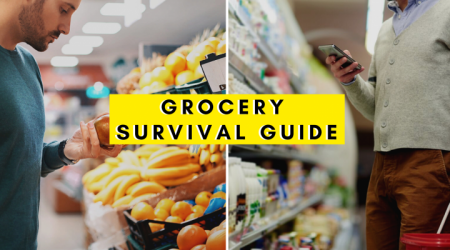Outdoor Cooking at Home: 6 Ways to Do it Properly

Once you start enjoying meals cooked outside under the open sky, it’s hard to get back indoors, at least for the remainder of the sunny season. Cooking outside gives you that outdoor time you crave and also allows for a variety of cooking methods that can’t be accomplished indoors, resulting in foods that have a wider variety of flavors than you’re used to. The following will explore a few things you might want to keep in mind if you’ve gotten hooked on outdoor cooking.
UNDERSTAND FIRE BANS AND PERMITS
Some outdoor cooking involves a flame; fire is often the perfect element to create that crispy, grilled flavor on the outside with a juicy and tender inside. This being said, in most counties, you’re not simply allowed to start a fire. In many townships, you’re first required to seek out a fire permit. Often these are inexpensive (perhaps ten dollars) and last all summer long. If you’re caught having a fire without one, the fine is often much more than ten dollars.
In addition to this, many counties have an occasional fire ban. These are put in place when it’s particularly dry or windy or otherwise difficult to control the spread of a fire. In times of drought, fire bans are common as well. Make sure you stay up-to-date on any fire bans in your area, as the fines can be quite intense. As well, if you lose control of a fire during a ban, often the environment is set up in a way that will produce a huge fire very quickly. Forest fires and other serious events have been caused by people ignoring fire bans.
Even if there’s not a fire ban in place, it’s a good idea to take proper precautions. Make sure you’ve chosen a good site for your fire and have the appropriate firefighting tools nearby. If multiple people are working with the fire, make sure everyone knows where they can find all necessary safety equipment.
CONSIDER KITCHEN FEATURES
Of course, not all outdoor cooking involves a dutch oven and an open fire. For those who love outdoor cooking and want a wider range of possibilities in regard to food preparation, there are prefab outdoor kitchen options. It’s completely possible to have a working stove, fridge, and counter space in your yard.
LEARN ABOUT FUELS
If you’re using a grill or fuel-based cooking device, it’s a good idea to learn about different fuel sources. Gas, charcoal, and wood (as well as different types of wood) can all influence the flavors present in your meal. Once you start experimenting, you’ll probably quickly find that you have strong preferences.
DON’T SKIP SAUCES
When learning about the different meals you can make outdoors, many people focus on meat and vegetables. The sauce that you marinate meat in or slather all over the food while it’s cooking (or once it’s done) is just as important and can really impact the quality of your finished product. Take the time to experiment with different handmade sauces. Most require only a few ingredients and a blender. Not only will your creations likely be healthier than store-bought versions as they won’t be chocked full of preservatives, but they can serve as the secret ingredient that keeps people asking you for your recipes. Be forewarned; when you dive into the world of sauces, you’re going to find some crazy-sounding suggestions like putting coca-cola in your barbecue sauce. Don’t be afraid to try out the odd recipes; that’s often where magic is found.
KEEP THINGS COVERED
When you’re cooking outdoors, you need to be on the lookout for bugs. Critters love free food, and that means if you leave something outside unattended for a bit, you might find a nasty surprise in your meal. Cover anything that is going to be left out for too long.
SKIP THE ALUMINUM
While aluminum has been part of the outdoor cooking guidebook for ages, it’s time to bring it to an end. Cooking with aluminum results in tiny flakes of aluminum separating from the main sheet and becoming embedded in your food. This gets ingested by anyone who eats the meal and results in a slow buildup of aluminum in the body over a lifetime. This has been repeatedly linked with Alzheimer’s disease.
The above tips should help you keep your outdoor cooking safe and on point. Don’t be afraid to seek out new recipes on YouTube or visit your local library’s cookbook section (there will be far more cookbooks than you could imagine).












Leave a Reply